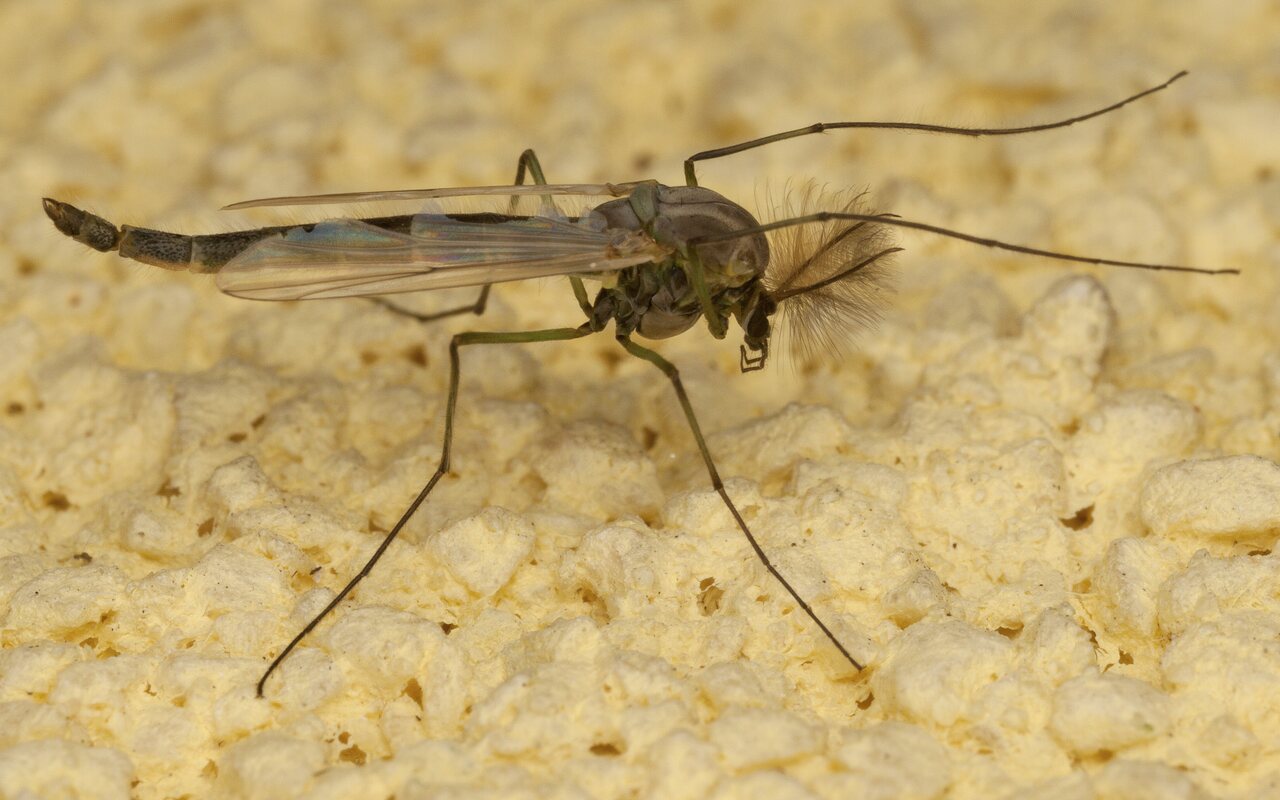
Chironomidae · uodas trūklys
- chironomids, nonbiting midges
- Zuckmücken, Tanzmücken, Schwarmmücken
- uodai trūkliai
- trīsuļodu dzimta
- ochotkowate
en.wikipedia.org/wiki/Chironomidae Larval stages of the Chironomidae can be found in almost any aquatic or semiaquatic habitat, including treeholes, bromeliads, rotting vegetation, soil, and in sewage and artificial containers. They form an important fraction of the macro zoobenthos of most freshwater ecosystems. They are often associated with degraded or low-biodiversity ecosystems because some species have adapted to virtually anoxic conditions and are dominant in polluted waters. Larvae of some species are bright red in color due to a hemoglobin analog; these are often known as "bloodworms". Their ability to capture oxygen is further increased by their making undulating movements.
Lietuvoje apie 150 rūšių. Kūnas 1–9 mm ilgio, pilkai žalias, rudas ar pilkas. Burna labai trumpa arba išnykusi. Sparnai be žvynelių. Patinų antenos vėduokliškos, kūnas plonas, patelių – plaukuotos, kūnas storas. Lervos vystosi įvairiuose vandens telkiniuose, drėgname dirvožemyje. Kai kurių rūšių lervos, gyvenančios deguonies stokojančioje aplinkoje, dėl organizme esančio hemoglobino būna raudonos spalvos. Uodų trūklių lervos – svarbus žuvų maisto komponentas ir vandens kokybės indikatorius. Kuršių marių pakrantėse uodų trūklių suaugėlių labai daug.
‥
0 comments
Add a comment
Comments